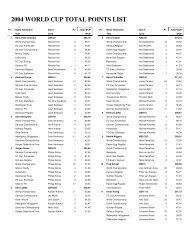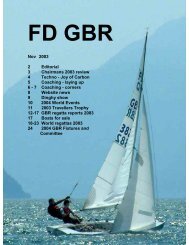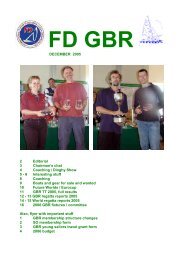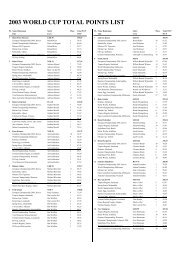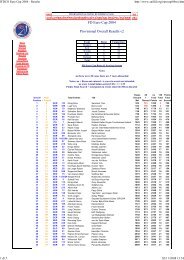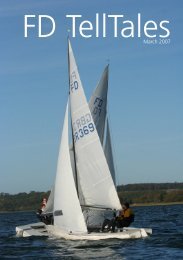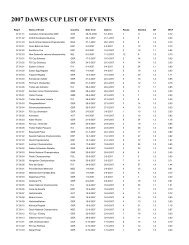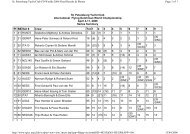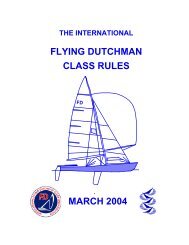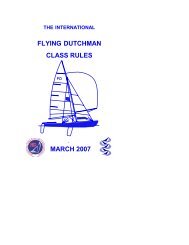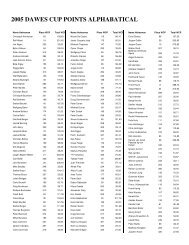MARCH 2010 - International Flying Dutchman Class
MARCH 2010 - International Flying Dutchman Class
MARCH 2010 - International Flying Dutchman Class
You also want an ePaper? Increase the reach of your titles
YUMPU automatically turns print PDFs into web optimized ePapers that Google loves.
INTERNATIONAL FLYING DUTCHMAN CLASS RULES <strong>2010</strong> 8<br />
b. Check at the same time the position and width of the centreboard slot (Rule 31).<br />
The station templates are set up on the keel and gunwale positions as found above<br />
(3 points per station). The adjustable lugs near the gunwale must be adjusted to<br />
have equal gaps on both sides between shell and template with the template centre<br />
at the centre of the keelband, or with equal sheer heights, whichever gives better<br />
results. One of the studs near the keel must touch the shell, with a tolerance of<br />
2 mm for the other stud.<br />
c. Measuring the gap now between shell and template, the variation in width of this<br />
gap must not exceed a maximum of 12.5 mm. (See details on measurement plan.)<br />
d. Check with a straight-edge (approx. 1000 mm long) for hollows aft of section 7.<br />
Small bumps or cutouts are also prohibited under this rule.<br />
e. The sheer height must be measured where the shell meets the top of the decking<br />
by taking the distance to the tie bar of the template. The difference must not vary<br />
more than a maximum of plus 6 mm or minus 12 mm from the distance of the sheer<br />
height mark on the template to the tie bar, with the exception of the stem template<br />
(See Rule 25).<br />
25. Stem, Profile and Height<br />
The gap between the hull and template, when positioned as per instruction 29a,<br />
must not exceed a maximum of 3 mm plus/minus for shape and 6 mm plus/minus for<br />
height. A bulbous stem is not permitted.<br />
26. Transom<br />
The height of the transom on the centreline, excluding the keelband, shall be<br />
290 mm plus/minus 6 mm. A hard chine transom is not permitted.<br />
27. The transom must be placed at the extreme end of the hull and must be vertical<br />
to the waterline. The spacing between the transom template lug and the baseline<br />
controls this, and it must be between 5 mm and 15 mm.<br />
28. No projections or apertures are permitted in the transom within 20 mm of the<br />
outside of the hull other than rudder pintles and 2 drain holes, each not larger than a<br />
maximum of 20 mm diameter. Corks or normal drain hole fittings protruding aft of the<br />
transom are allowed.<br />
29. Keel line measurements<br />
The shape of the keel line shall be checked by measuring the minimum distance to<br />
the baseline, which is the line drawn from a point 100 mm under the keel at the<br />
transom to a point 120 mm under the keel at station 9. These minimum distances, H<br />
measurements, must be taken at each station:



